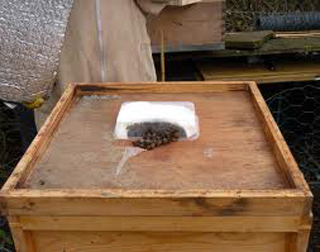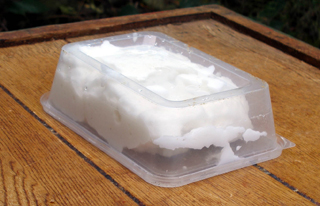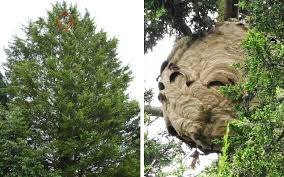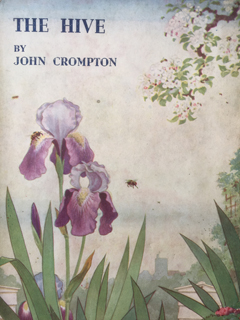 Another year draws to a close and we can look back and see what was good and what was not so good. Hopefully, there will be more good than not so good things to recall and we can look forward to a New Year which always holds great promise with more good things to come. True of beekeeping, as well as everything else in our lives. The coming season is going to be the best yet (every beekeepers’ belief at the end of a poor honey harvest)!
Another year draws to a close and we can look back and see what was good and what was not so good. Hopefully, there will be more good than not so good things to recall and we can look forward to a New Year which always holds great promise with more good things to come. True of beekeeping, as well as everything else in our lives. The coming season is going to be the best yet (every beekeepers’ belief at the end of a poor honey harvest)!
It is the time of year, though, when we beekeepers should go out to our hives and “heft” them, that is, lift one side gently off the ground, then go round to the other side and lift that gently off the ground as well – only about 1cm or so, we’re not trying to tip them over. If the hive feels as if it’s “nailed” to the ground, we know there are enough stores in the brood box to see the bees right for a while yet. However, if we end up virtually tipping the hive over by inadvertently applying too much “lift” to the heft, and it feels light, then the bees are likely to be short of stores and we need to do something – quickly!
I have done this to my hives and in the main they are adequately provisioned. But as ever, there are one or two hives which are low on stores, either having eaten everything they had brought in or not having brought in as much as other colonies in the first place. The former could be down to the degree of Italianisation (is that a word? If not, it should be!) of the queen, because the Italian bees are notorious for not being frugal with their stores – “Hey, look at all this food! Let’s have a party!”.
 The latter could be because the colony is smaller and had a smaller foraging force available to gather the nectar and pollen from the ivy and asters at the end of the season. Either way, they are short of food and need topping up, so I will make some fondant for them and place that either over the crown board feed-hole or directly onto the bars of the brood frames in contact with the bee cluster, so that they don’t have to break their cluster to reach it. If they break their cluster, some of the bees might drop below their survival temperature of 7 or 8 degrees and fall to the hive floor and die, and we don’t want that.
The latter could be because the colony is smaller and had a smaller foraging force available to gather the nectar and pollen from the ivy and asters at the end of the season. Either way, they are short of food and need topping up, so I will make some fondant for them and place that either over the crown board feed-hole or directly onto the bars of the brood frames in contact with the bee cluster, so that they don’t have to break their cluster to reach it. If they break their cluster, some of the bees might drop below their survival temperature of 7 or 8 degrees and fall to the hive floor and die, and we don’t want that.
I have received more detail about the Asian Hornet sightings in Devon and include this in my report for you to appreciate how seriously DEFRA (or APHA, as they are now re-branded) and the National Bee Unit (NBU) take this exotic pest threat to our honey bee populations. Following suspect sightings, on Sunday 24th September the NBU received two photographs from a beekeeper in Woolacombe, North Devon, of an Asian hornet.
 The following day, the 25th September, preliminary surveillance began in the apiary and the NBU’s Contingency Plan was activated. The local Bee Inspector monitored the apiary and initially found surveillance difficult due to the position of the colonies in the apiary. However, that morning, the Inspector managed to capture a hornet and sent the sample to the NBU in Sand Hutton, York, for formal identification.
The following day, the 25th September, preliminary surveillance began in the apiary and the NBU’s Contingency Plan was activated. The local Bee Inspector monitored the apiary and initially found surveillance difficult due to the position of the colonies in the apiary. However, that morning, the Inspector managed to capture a hornet and sent the sample to the NBU in Sand Hutton, York, for formal identification.
Later that afternoon, the Inspector returned to the apiary site and a further 7 hornets were seen hawking in front of hives, but no line of sight could be ascertained, to establish a flight path back to the nest. (Hawking is the Asian Hornet’s practice of hovering in front of the hive, facing away from the entrance, and intercepting returning forager bees. The hornet bites the head off the bee and takes the abdomen and thorax back to its nest to feed its young).
On the 26th September, South West Region inspectors were deployed to intensify searches for Asian hornets hawking in the area. Wet, misty and murky morning weather conditions were not ideal, but the Inspectors continued to survey the original outbreak apiary and two lines of sight were established. Inspectors were able to identify a second apiary site about 1km from the original outbreak, where one hornet was seen hawking for returning foraging bees. A hornet sample was taken, in order to establish if the hornets visiting the second apiary site were from the same nest and thus determine if there were multiple nests in the area.
 Hornets were also observed in an apiary at a further site and were seen flying in a similar line of sight. The lines of sight from both the outbreak apiary and the second apiary combined were enough for an initial triangulation to be taken and investigated. The Inspectors began investigating public footpaths and the area around where the lines of sight met at the triangulation. A great deal of Asian hornet activity was observed at a nearby building site and on 27th September an Asian hornet nest was discovered.
Hornets were also observed in an apiary at a further site and were seen flying in a similar line of sight. The lines of sight from both the outbreak apiary and the second apiary combined were enough for an initial triangulation to be taken and investigated. The Inspectors began investigating public footpaths and the area around where the lines of sight met at the triangulation. A great deal of Asian hornet activity was observed at a nearby building site and on 27th September an Asian hornet nest was discovered.
 The nest was destroyed the following evening, removed and taken to the NBU lab on Friday 29th Sept. Further surveillance was carried out within a 10 km zone of the nest site and no further Asian hornet activity was detected. Following analysis of the nest has shown that none of the adult hornets were male and this indicates that the nest was detected and removed before the production of queens which will have gone into winter and then produced nests in 2018.
The nest was destroyed the following evening, removed and taken to the NBU lab on Friday 29th Sept. Further surveillance was carried out within a 10 km zone of the nest site and no further Asian hornet activity was detected. Following analysis of the nest has shown that none of the adult hornets were male and this indicates that the nest was detected and removed before the production of queens which will have gone into winter and then produced nests in 2018.
If the Asian Hornet is successful in establishing itself in the UK, we beekeepers are going to have our work cut out to save our bees, so spotting Asian Hornet nests and the hornets themselves is key to our salvation. Please keep your eyes peeled.
 Finally, not forgetting that Christmas has come and gone, I just wanted to say that amongst my many presents from my wife this year was a beekeeping book with illustrations by Alfred Bestall. Bestall is better known as the storyteller and illustrator for the Rupert Bear stories, after taking over from Mary Tourtel in 1935. How do I know this? Because I’m a Rupert Bear addict and Father Christmas brings me a Rupert Bear Annual every Christmas and has done so for as long as I can remember. Sad really, isn’t it? But there you go. His illustrations in this beekeeping book are uniquely identifiable as his and I am chuffed to bits – two passions in one volume! What more could anybody ask for?
Finally, not forgetting that Christmas has come and gone, I just wanted to say that amongst my many presents from my wife this year was a beekeeping book with illustrations by Alfred Bestall. Bestall is better known as the storyteller and illustrator for the Rupert Bear stories, after taking over from Mary Tourtel in 1935. How do I know this? Because I’m a Rupert Bear addict and Father Christmas brings me a Rupert Bear Annual every Christmas and has done so for as long as I can remember. Sad really, isn’t it? But there you go. His illustrations in this beekeeping book are uniquely identifiable as his and I am chuffed to bits – two passions in one volume! What more could anybody ask for?
A Happy New Year to you all.
Colin Rees – 01872 501313 – colinbeeman@aol.com

